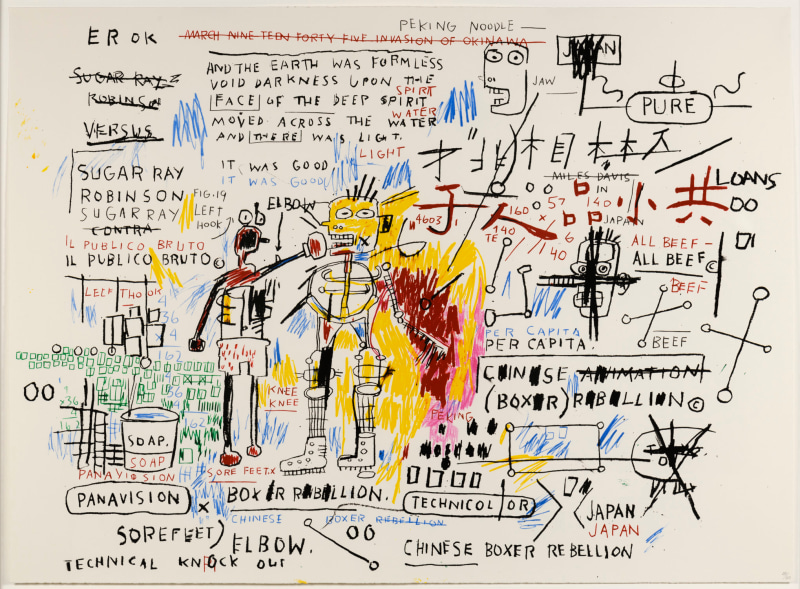
Jean-Michel Basquiat (1960-1988)
American painter Jean-Michel Basquiat was born in Brooklyn, New York to a Haitian father and Puerto Rican mother. Although he had no formal training, Basquiat educated himself through regular visits to numerous cultural institutions throughout the city with an aptitude for art history. As a teenager, Basquiat used graffiti as a creative outlet, spray-painting under the pseudonym SAMO. Using found materials such as wood and discarded canvas, Basquiat began to paint scenes that were inspired by the city around him. He developed a unique visual diary of the urban world as he experienced it, full of symbols and motifs that would persist in his later works.
In 1980, Basquiat rose to prominence following his participation in the “Times Square Show,” a group exhibition featuring radial New York art. Art critic Jeffrey Deitch praised Basquiat’s work as a “knockout combination of de Kooning and subway spray paint.” His 1982 solo show with gallerist Annina Nosei would further catapult the artist to astronomical success worldwide and cement his legacy in the art world.
A prolific artist, Basquiat’s style is arguably the most instantly recognizable. His figures are flattened, yet frenzied, punctuated by bright, vivid colors and juxtaposed in a backdrop of text and symbols, like dollar signs and crowns. His energetic neo-expressionistic canvases, often in the form of self-portraits, took influence from a wide range of sources: daily observations, art history, his contemporaries, pop culture, music, Haitian tradition, spiritualism and race, all seamlessly intertwined. He was particularly fascinated by the idea of duality, which was compounded by his own struggle to reconcile his identity as a celebrated Black man in the art world. Unconcerned with alienating his audience, Basquiat embraced challenging subject matter. Many of his works critique modern social injustices, depicting emotionally charged issues such as wealth disparity, police brutality, and racism.
While Basquiat tragically died at twenty-seven from a drug overdose in 1988, his work continues to hold immense significance today. Baquiat’s work evolved and diversified the art historical landscape. He proved instrumental to the introduction and acceptance of street art as a contemporary genre. As Keith Haring lamented, “He truly created a lifetime of works in ten years…Greedily, we wonder what else he might have created, what masterpieces we have been cheated out of by his death, but the fact is that he has created enough work to intrigue generations to come.”
